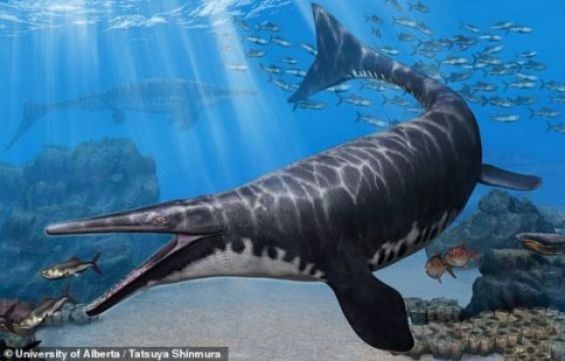Researchers have recently discovered a new species of ancient maritime predators in Morocco. The sea monster is a mosasaur, a long and thin reptile with crocodile-like jaws.
According to a group of researchers from the University of Alberta, the monster roamed the sea between 72 million and 66 million years ago in what is today the Oulad Abdoun Basin in northern Morocco. Also known as Gavialimimus almaghribensis, the new species survived in a highly competitive ecosystem.
Analyzing fossils of the animal’s jaw bones, researchers revealed that what differentiates the new Moroccan species from other mosasaurs is that it «has a long, narrow snout and interlocking teeth—similar to the crocodilian gharials, a relative of crocodiles and alligators».

«Its long snout reflects that this mosasaur was likely adapted to a specific form of predation, or niche partitioning, within this larger ecosystem», Catie Strong, who led the research as part of an undergraduate honors thesis explained.
A powerful sea predator
The discovery made in Morocco shows that each species of the sea monster has shown a great deal of adaptation when surviving among other powerful predators. «For some species, these adaptations can be very prominent, such as the extremely long snout and the interlocking teeth in Gavialimimus, which we hypothesized as helping it to catch rapidly moving prey», she said.
Indeed, Strong’s observations indicate that the reptile fed on everything it could lay its powerful jaws on.
«The narrow, highly elongate snout and interlocking teeth of Gavialimimus almaghribensis are convergent with the condition in gharials, a distinctive taxon of longirostrine crocodilians. In gharials, this morphotype reflects predation on rapidly moving fish, with the interlocking teeth entrapping highly agile prey and the narrow snout reducing drag and displacement of water as the head swings laterally and the jaws snap shut», the study explained.
«This does help give another dimension to that diversity and shows how all of these animals living at the same time in the same place were able to branch off and take their own paths through evolution to be able to coexist like that», Strong said.
According to the researcher, the new discovery reveals that Morocco is an «incredible» place to find fossils. «Those phosphates themselves reflect sediments that would have been deposited in marine environments, so there are a lot of mosasaurs there», she concluded.
The new study is added to a recent one on another maritime monster. While the Gavialimimus almaghribensis roamed the sea in what it is now northern Morocco, the spinosaurus lived a perfectly aquatic life in the Kem Kem basin as a river swimmer.




 chargement...
chargement...












